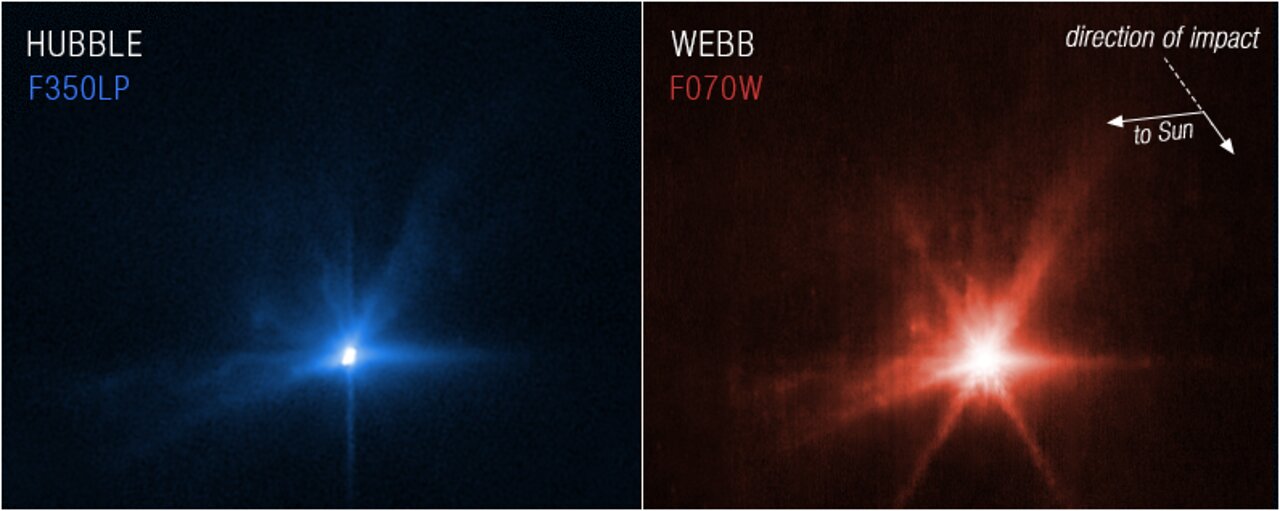Webb and Hubble Capture Detailed Views of DART Impact
For the first time, the NASA/ESA/CSA James Webb Space Telescope and the NASA/ESA Hubble Space Telescope have taken simultaneous observations of the same target.
These images, Hubble on left and Webb on the right, show observations of Dimorphos several hours after NASA’s Double Asteroid Redirection Test (DART) intentionally impacted the moonlet asteroid. It was the world’s first test of the kinetic impact technique using a spacecraft to deflect an asteroid by modifying its orbit.
Both Webb and Hubble observed the asteroid before and after the collision took place.
Scientists will use the combined observations from Hubble and Webb to gain knowledge about the nature of the surface of Dimorphos, how much material was ejected by the collision, how fast it was ejected, and the distribution of particle sizes in the expanding dust cloud.
In the coming months, scientists will also use Webb’s Mid-Infrared Instrument (MIRI) and Near-Infrared Spectrograph (NIRSpec) to observe Dimorphos further. Spectroscopic data will provide researchers with insight into the asteroid’s composition. Hubble will monitor Dimorphos ten more times over the next three weeks to monitor how the ejecta cloud expands and fades over time.
Hubble observations were conducted in one filter, WFC3/UVIS F350LP (assigned the colour blue), while Webb observed at F070W (0.7 microns, assigned the colour red).
Credit:NASA, ESA, CSA, and STScI
About the Image
| Id: | weic2215a | |
|---|---|---|
| Type: | Collage | |
| Release date: | 29 September 2022, 15:30 | |
| Related releases: | weic2215 | |
| Size: | 796 x 318 px | |


